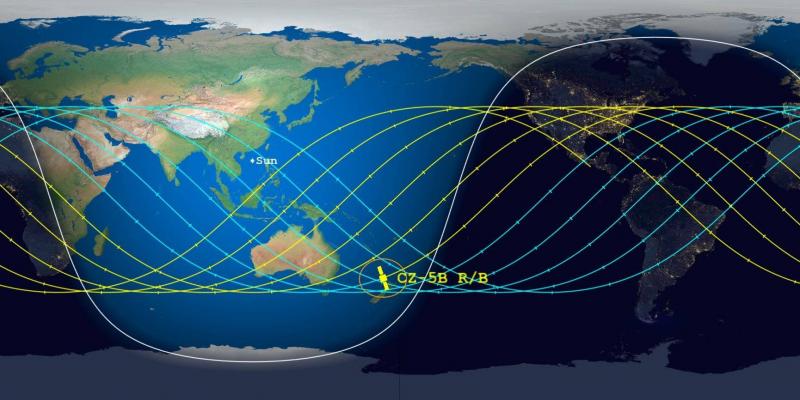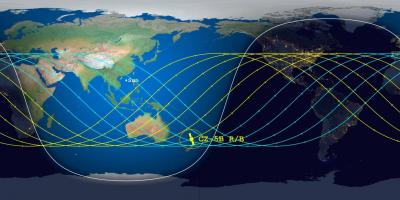The latest predictions regarding the uncontrolled Chinese rocket's return to Earth have established a "time and spatial range" through which it will penetrate the atmosphere. According to a tweet from the American Aerospace Corporation, funded by the government, the rocket is expected to enter Earth's atmosphere within 8 hours before or after 4:19 AM GMT on Sunday. This indicates that the "debris" rocket named "Long March 5B" will reach Earth on Saturday evening or Sunday morning.
Aerospace Corporation stated in its tweet: "Our latest prediction for the return of the rocket body is May 9, 2021, at 04:19 Coordinated Universal Time ± 8 hours along the illustrated ground track," including a map in the tweet. According to the institute's Orbital Reentry and Debris Studies Center, the rocket will likely enter the atmosphere near northern New Zealand, as indicated by the accompanying map. However, it also warned that the entry could potentially occur anywhere along paths covering vast areas of the globe. The specific landing site of the rocket on Earth remains a subject of speculation.
On Friday, the Chinese Foreign Ministry announced that most debris from the rocket would burn up upon atmospheric reentry and is unlikely to cause any damage. This statement responded to comments from the U.S. military, which mentioned that the U.S. Space Command is tracking what it called an "uncontrolled reentry."
The "Long March 5B" rocket launched from China's Hainan Island on April 29, carrying the uncrewed "Tianhe" module, which would serve as living quarters for a permanent Chinese space station. Astrophysicist Jonathan McDowell informed Reuters earlier that there is a possibility of parts of the rocket falling to Earth, potentially in populated areas, similar to an incident in May 2020 when pieces of the first "Long March 5B" rocket landed in Côte d'Ivoire, damaging some buildings but resulting in no reported injuries.
The height of the rocket body has been decreasing since last week, but the rate of descent cannot be determined due to unpredictable variables in the atmosphere. This part is among the largest space debris returning through the atmosphere to Earth, weighing 18 tons.




